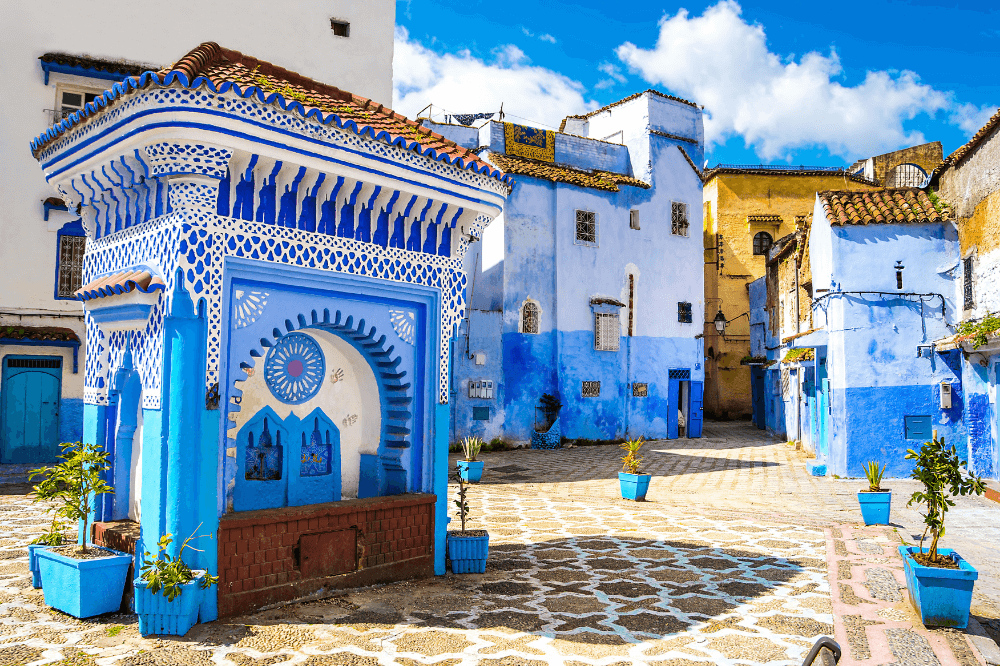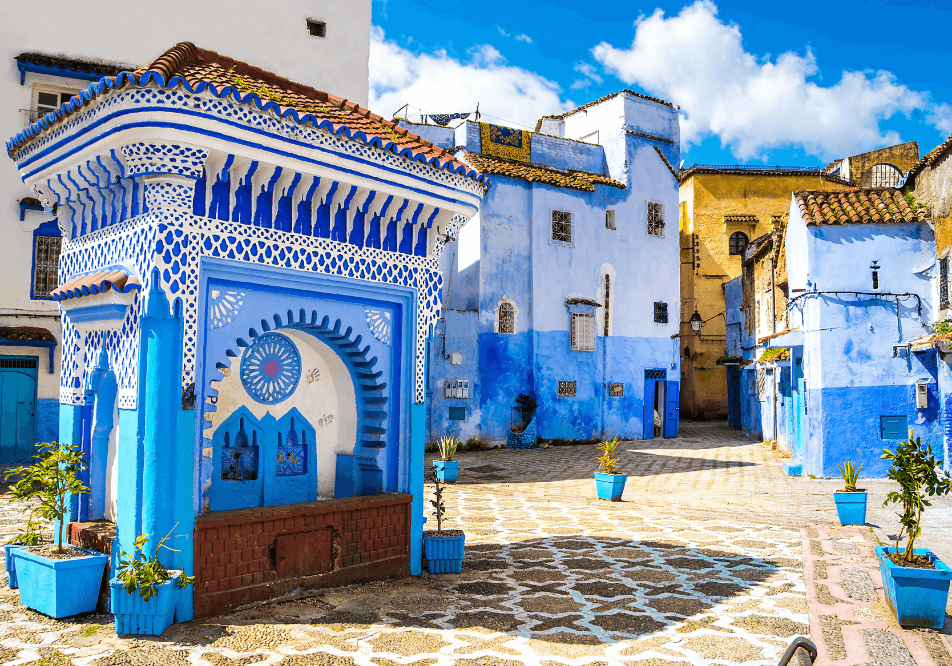A detailed itinerary for your next
European trip
By Wander Team | 10 minutes read
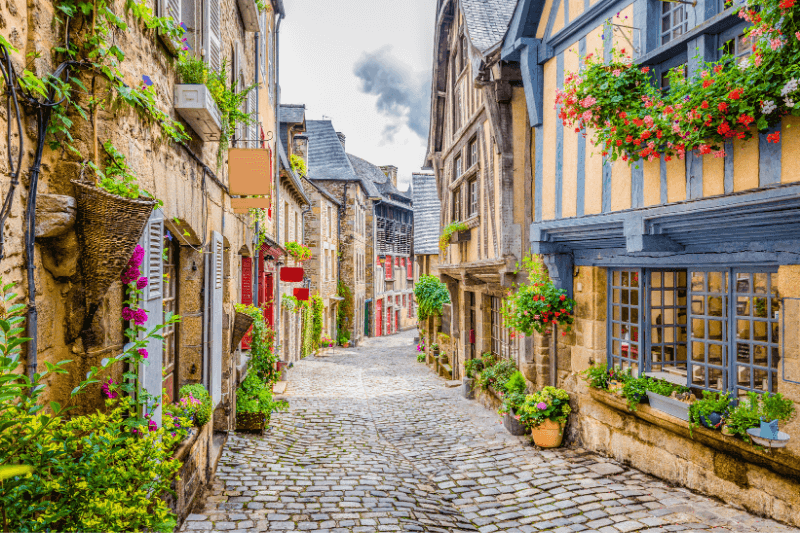
Covid has taken a hard toll on inbound European tourism, nevertheless it is worth mentioning that it is still set to become one of the top tourist destinations for the post-Covid era.
The Old Continent has not lost its charme just yet
When people think of Europe, ancient castles, tiny old-fashioned streets and bistros, die-hard soccer supporters, countless churches, succulent food and wine are usually the first things that pop up into their minds. Indeed, diving deep into the European culture might seem like a daunting task, especially for first-time visitors or those who are not familiar with it, who oftentimes are not able to truly enjoy and discover all the wonders that it has to offer (and, believe us, there's a whole lot than the aforementioned ones). From out-of-this-world sceneries to once-in-a-lifetime experiences, there's always something out there that suits your tastes and fulfills your needs. And things like Fjords, Northern Lights, Costa Smeralda, Paella, Cesky Krumlov, Oktoberfest, Hallstatt, Lasagna are just some of those.
It goes without saying that, in order to experience Europe the right way, you need to be in the right place, at the right time. Worry not, we've got you covered! We've set out a checklist of not-to-be-missed landmarks and hotspots that will help you fully appreciate your itinerary and make the most out of it.
If you're eager to learn more, brace yourself and get ready to pick your favorite route among the ones that we have laid out for you!
1. European capitals tour
For centuries, traveling continental Europe and especially to its capitals has been considered the epitome of upper-class education and a must-do to learn more about culture diversity. Under the name of "Grand Tour", as it was referred to in the 17th century, young aristocracy members departed their villages during their coming of age to expand their general knowledge and to enrich their talent stack. European capitals still represent to this day some of the most visited cities in the world, and have not lost their antique old-fashioned charm, where, just by crossing and walking by their narrow roads, can make one feel like getting back in time. Paris and London, for instance, cover top charts and respectively rank #1 and #3 on a sheer international arrivals basis. And that's not hard to find out why: both metropolises compete on a worldwide scenario to offer a 360 degree experience to their visitors. Museums, historical landmarks, an international expat and culinary community, world-class happenings and events, a sprawling tech and startup scene, attract each year crowds of people ready to plunge into the truly metropolitan European lifestyle.
Craving a world-class food itinerary? Then book yourself a ticket to Italy. Rome, the city where all the roads lead to - as the saying goes, embodies the definition of a truly open-air museum, where historical landmarks and ancient ruins that can be visited are numberless. One could literally spend a month in Rome and not yet getting done with it. Once epicenter of the Roman Empire, which claimed control of most continental Europe, it has since then developed into an urban center mixing old and modern traditions, and making the perfect destinations to those looking forward to delighting their taste buds. From homemade established dishes to modern fusion, be ready to get lost into the Italian food landscape. Pasta, pizza, gelato, top notch Antipasto, cold cuts, top-notch wines, pastry and spirits, are at the core of it.
Heading to frosty North

Set as the Finnish capital by the Russian Government in 1809, Helsinki has since then developed into a modern European hub attracting skilled workforce, and constanty ranking among the top spots for society development indexes (source: myhelsinki.fi)
Among European hubs that you can't absolutely miss visiting, we suggest you stop by Copenhagen, Stockholm, Helsinki. Respectively capital cities of Denmark, Sweden, Finland, these might be lesser known hubs, however, that doesn't mean that they're short of wonders, things to do and places to explore.
By having a multi-century history, Copenhagen's charm resides into its small navigable canals, castles, museums, botanical gardens, colorful buildings, a renowned amusement park, and many more dugouts and local happenings that will make your time visiting here well worth spent. If you are into trying local delicacies, have a stroll at Torvehallerne Market, where regional groceries can be purchased at small kiosks and stands and consumed on the spot.
In its very own way, Stockholm also contributes a lot to the European capital landscape. With about 1 million people, it is by far the largest city in Sweden and in the whole Scandinavian region. Surprisingly, considering how far North it lies, climate can be relatively quite mild, and it is surrounded by waterfalls, bridges, and an astonishing nature. Exploring Old Town, City hall, cruising to The Palace, relax in a convivial ice bar, and sailing through the Archipelago will guarantee you once-in-a-lifetime moments.
Helsinki, Finland's largest city and capital, lies on a Peninsula in the Gulf of Finland. It is the country's hub for business, education, research, culture, and government. Wide parks and open spaces are at the heart of this vibrant city. Similarly to Stockholm, also Helsinki is widely connected by bridges, but, at the same time, can be easily visited by walk. Among the main city landmarks are the Helsinki Zoo (among the oldest ones in the world), Helsinki Skywheel, Helsinki Cathedral, Suomenlinna Fortress, Linnamm Aki amusement park, and Market Square.
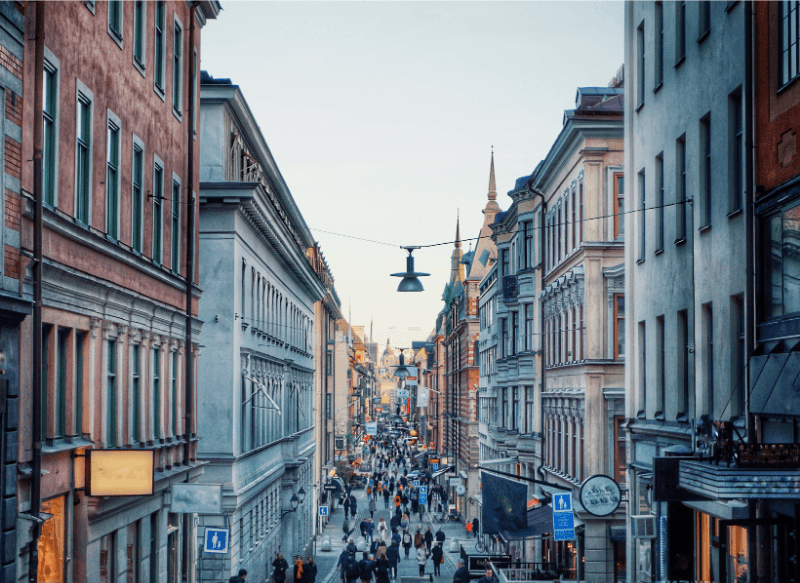
With so many interesting places for visit, a trip to Northern Europe is definitely worthy. Be aware though, if you wish to get the most out of it then the best time of the year to explore is indeed on May or June, however, if you're keen to have a truly authentic Christmas holiday and you're not afraid of freezing temperatures, then December is the month that definitely suits your needs the best.
Southbound towards the Balkans Region
The Balkans Peninsula has, since time immemorial, been a strategic and trade crossroad due to its geopolitical position, linking the Western and Eastern part of Europe, and, with the rise of the ancient Greek society, can be considered the birthplace of democracy and modern society. Indeed, it is not short of wonders that are there awaiting anyone to be discovered. From lesser known capital villages like Podgorica to important maritime hubs such as Athens, this part of Europe has got a lot of unique experiences to offer to curious travelers. Let's take a look at some of the most attractive ones.
Tirana, Albania's capital and main city, sits in the middle of the country, and it is often regarded as a town off of the beaten travel road. On the other hand, that's what makes it a great place to visit! With a population of little over 300.000, Tirana is a stunning example of traditional European, Soviet style, and Middle Est structures blending together to create a unique architectural scenario. Strolling around it can make one feel more like he's wandering through a middle age village rather than a capital city.
Podgorica, in the same way, is quite a small burg for being considered on the same size range as larger capitals: it is definitely ones of the least populated European ones, with only about 150.000 locals calling it home. Once part of Yugoslavia, some of its landmarks to check out are the Cathedral of the Resurrection of Christ, its iconic suspended bridge, and King's Cross Park. On your visit to Montenegro, you certainly don't want to miss some of the local delicacies such as Kačamak, Cevapi, and Burek.
Athens's history stretches more than 3000 years. The city thrived during classical antiquity, today it is a bustling and modern capital city and home to some of Greece's most important tourist landmarks. The Acropolis, for example, is one of the oldest and most breathtaking ancient ruin. Byzantine style churches are found all over the city, and village-neighborhoods north of the Acropolis. A visit to pedestrian street, riddled with inviting restaurant terraces, will guarantee you'll never run out of things to do. Athens can seem vibrant and busy during summertime, but you can still definitely keep enjoying pleasant temperatures on Fall and Spring season. Among its most important tourist attractions are: National Archeology Museum, the Pláka and Anafiotika districts, Ancient Agora, and the Roman Agora.

Skopje's history dates back to the Neolithic Period. The modern settlement's age dates back to 4000 B.C., but it was only in 1991 that the city was declared capital city of modern-day Macedonia. Relatively small, it can quite much be visited on a one or two day trip. Some interesting places not to miss out are the Church of St. Clement of Ohrid, the Church of St. Panteleimon, Lake Matka, Macedonia Square, Memorial House of Mother Teresa, the Mustafa Pasha Mosque, and the Old Bazaar Skopje.
Winding up in Eastern Europe
The Eastern Part of the European continent is riddled with breathtaking sceneries, enchanted castles, rivers, and bustling urban areas, the best part? They're not so well-known like their Western counterparts. Still, this doesn't mean they're short of wonders. One just needs to be there, strolling around their charming oldtown middle-age streets, in order to experience what it really feels like to explore this part of the world. When talking about Continental Europe, a couple of renowned capital cities pop up into mind: Prague and Budapest. Architecturally and structurally similar, they represent respectively Czech Republic's and Hungary's capitals and main urban hubs, sharing common river views.
There is a good reason why Prague's mentioned on many bucket lists: it represents the desirability of the European cities that have gained massive public imagination for decades. There are just so many activities to do and places to watch here that we had to skip some of them (sigh!); from hopping on board of a river ferry and enjoy the sunset, to the more iconic astronomical clock and Charles Bridge, to the National Museum. Old Town Square has been mostly unmarked from the 10th century, and the architecture is fascinating enough to draw locals and tourists alike. Prague's Castle is also one of the most famous landmarks in Prague. This location is so wide, that you should make sure to have enough time to roam around its beautiful structures and architectural compositions. Saint Vitus Cathedral, on the other hand, is one of the most remarkable examples of Gothic architecture, and it was constructed almost 600 years ago. It is very often considered as the center of religious life in Czech Republic. Among local food to try: Palačinky, Trdelník, and Obložené Chlebíčky. Activities to enjoy include: listening to live music around the city's streets, observe Prague swans, explore local markets, enjoy Letna Park's stunning city views, and stroll around the city's beautiful curated gardens.
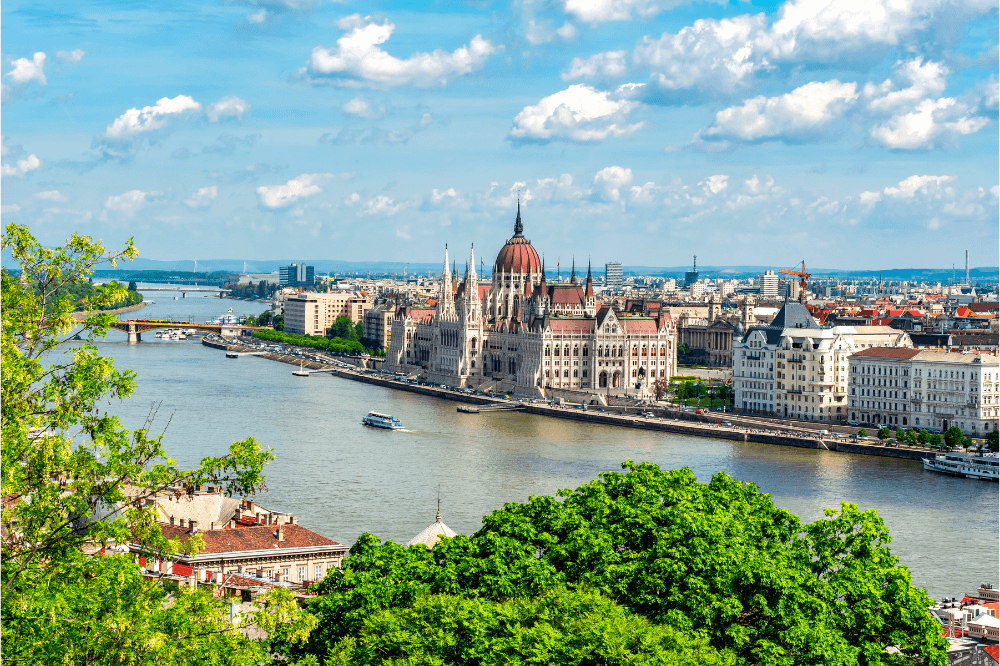
Budapest, Hungary's main city, lies on Danube's river bank. Parliament Building (3rd largest one in the world) is indeed one of the most iconic buildings, as well as being featured in most postcard views. Nominated "The city of spas" for its countless thermal baths, Budapest boast a mix of breathtaking sceneries, combined with delicious local delicacies, stunning garden and park views, and remarkable Gothic and Neoclassical architecture. Spots not to be missed: City Park, Central Market Hall, Chain Bridge, Buda Castle, and Fisherman's Bastion. Memorial stones and monuments are also evenly spread across the city. If you are keen to try out a food tour experience, some Hungarian staples include Goulash, Chimney cakes, and traditional Kolbász sausages.
To finish up your European capital tours, you might also want to hop on a flight or train ride to Warsaw and Bucharest, two less touristy destinations that are still worth a few days visit and that will help you discover the truly untapped core of European culture.
2. Touring small local villages
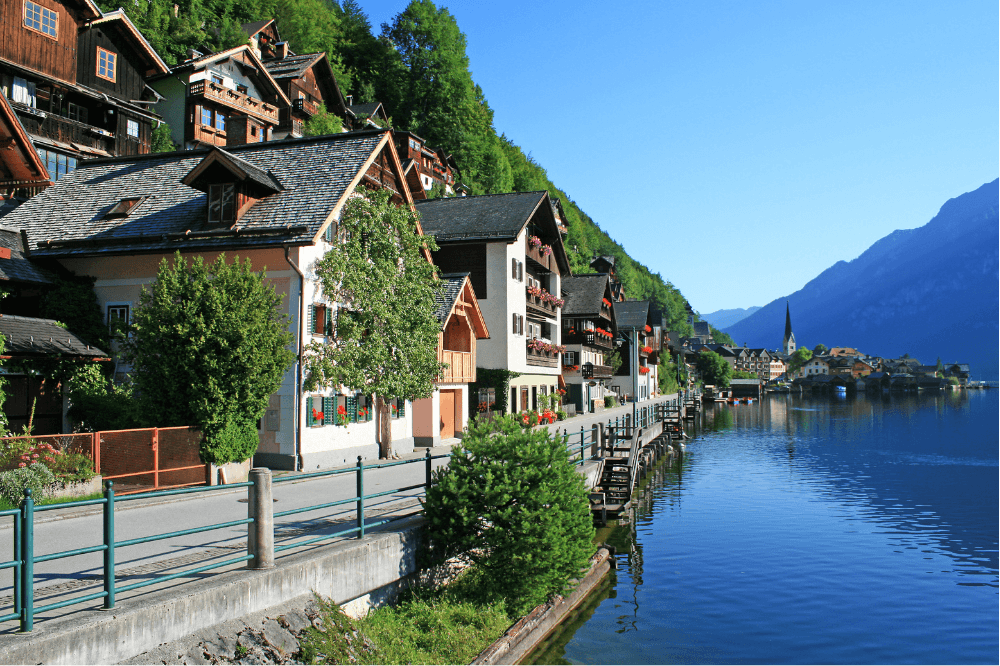 Hallstatt, a hidden gem in the heart of Austria.
Hallstatt, a hidden gem in the heart of Austria.
There is no better way to learn more about custom and traditions in Europe than getting around tiny burgs, villages, and rural communities across its vast upland, mountain and sea sceneries. Although some of these urban areas are quickly depopulating due to a lack of financial and job stability and of a multicultural lifestyle, one thing is sure: they really do look like those picture-perfect landscapes that everyone would want to see at least once in a lifetime. From tiny municipalities in the Alps and self-sustained micro nations such as Luxembourg, Andorra, Liechtenstein and San Marino, to the sun-splashed Mediterranean villages, there's just everything for everyone. Old world palaces, country cottages, lake settlements, extraordinary rock formations, you mention it! Far away from the urban hustle-and-bustle, here are some of the most-sought after locations to check out.
◼ Hallstatt, Austria: Nature and culture both live in harmony here. Located on a shore of a sleeping lake and surrounded by high hills, it was one of the first and most unique settlements of the region. Often linked to the relevant amount of salt deposits in the surrounding mountains, Hallstatt has a proud history that dates back to a thousand years. The village contains a rich variety of historic buildings, and its church contains precious works of art. The old marketplace and fountain is crowned by a trinity column which dates back to 1744. Its impressive museum displays the history of salt mining in the area. Today, Hallstatt gets regularly more than 1 million tourist arrivals a year.
◼ Cesky Krumlov, Czech Republic: The beautiful medieval town of Cesky Krumlov lies on the bank of a river and in the southern region of its country, about 2 hours bus ride away from Prague. Home to the magnificent Krumlov Castle and an historic city center, it is a UNESCO protected site. Along the narrow streets that traverse the Old Town, tourists encounter an enchanting atmosphere, surrounded by more than 300 historically protected buildings. Two main buildings dominate Cesky Krumlov skyline: the Castle, and the Church Tower of St. Vitus. Some of the landmarks to check out apart from the castle are: Lazebnicky Bridge, St. Jost Church, Monastery of the Minorites, Svornosti Square, and the City Park.
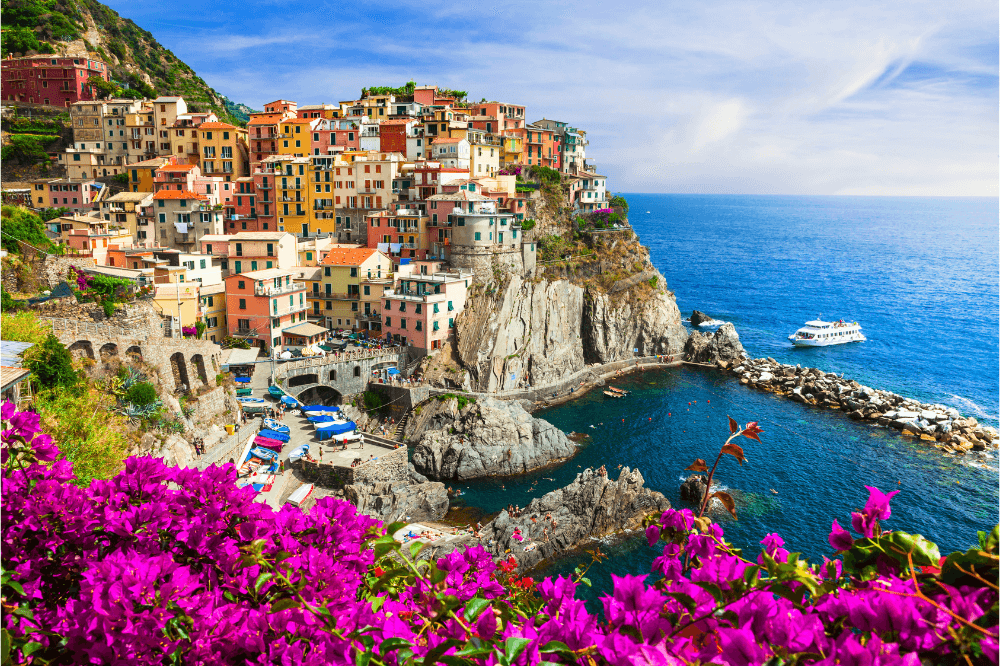
◼ Besalú, Spain: This town is unlinke any others you've ever seen. It can only be accessed by walking a long bridge spanning the river of Fluvià. It's one of the very few towns in the world that can claim a tower gate. Souvenire shops snatch up the surrounding real estate, before leaving you wondering its narrow streets. Once a country with its namesake capital city, today we can enjoy Besalú as a truly local Catalonian hidden gem. If you're less interested in hanging out at the beach and more interested in the mountains, then this place will become hands down your favorite spot by far. Local landmarks include Plaza Mayor and the St. Vincent Church.
◼ Positano, Italy: Positano is a cliffside village in Southern Italy's Amalfi Coast. It is a well known tourist destination with steep narrow streets, riddled with cafes, bars, and boutiques. The main point of the town is its church, built in the 13th century. The safest and most convenient way to reach Positano is by flying to Napoli International Airport and from there catch a bus or hire a car/taxi. When it comes to accommodation, there are all possible options for everyone's needs: Airbnb, hostels, hotels, private rooms. During the summertime, it is possible to access the private beach and chill out on beach beds sipping your favorite Aperitivo. Be ready to wear comfortable shoes though as you'll need to climb hundreds of stairs!
3. Hiking trails and island hopping
From the largest and busiest European hubs to the most remote settlement, we've covered some of the places to check out for your trip. To top up your journey, we recommend you to walk through few select hiking itineraries and to take a ferry to some of must-visit isles. To top up your journey, we recommend you to walk through few select hiking itineraries and to take a ferry to some of must-visit isles.
Strolling through the Dolomites
Able to impress even the most experienced hiker, Dolomites Mountains in northern Italy are without a doubt the heaven of outdoor activities and nature lovers, with their picturesque views, crystal clear lake waters, and valleys. The most popular trails include touring around Val Venosta (close to the Austrian border), Gardena, Val di Fassa, and Val di Funes. If you're lucky enough to get there by summertime, you'll be astonished by the clear reflections of the mountains in the lakes. If you love getting around by bicycle and watching incredible scenery at the same time, several cycling paths are available. Taking a rest and having a quick meal is also possible thanks to numerous picnic installations and areas. Cable cars are useful in getting you to the top of the peaks in a short amount of time. Some of the trails present moderate/intermediate difficulty, thus sometimes you will find yourself engaged in climbing a few steep rocks uphill. However, the breathtaking scenery compensates for all the hard work and will guarantee you out-of-this-world views.

Hiking on Norwegian Fjords trails
"Fjord" comes from a Norse word meaning "Where one fares through". By definition, a Fjord is an elongated, deep and narrow sea or lake drain, surrounded by steep land, and by dramatic mountain sceneries, and 3 of the most famous ones are Nærøyfjord, GeirangerFjord, and Lysefjord, and include some of the Northern Europe's highest peaks and a few remarkable glaciers; rivers of ice carve huge valleys creating the defining feature of Norway's landscapes. Some of the outdoor activities you can enjoy are fishing in pristine waters, hiking, and tenting. Make sure to include a visit to the Instagram popular Kjerag spot, where you'll be able to take scroll-stopping shots to impress your audience!

Greek islands hopping
Often visited by tourists during the summer break, Greek archipelagos are composed by over 6000 tiny and medium sized islands, some of these presenting remarkable views, beaches, cliffs, and offering unforgettable sunsets and night lights. Covering all of them would seems as a daunting task, however some of the most popular destinations include Santorini, Zakynthos, Mykonos, Corfu, and Rhodes. Heavily populated by tourists, these isles boast pristine beaches, ancient ruins, combined to a vibrant nightlife. Lesser known locations include the islands of Hydra, Paros, and Cephalonia, Kalymnos, and the Cyclads Archipelago. Their quiet and secluded beaches, a low cost of life that doesn't compromise with quality, the traditional stone-built architecture, make them a world-renowned tourist hotspot.
What's your pick for your next European trip? Let us know!



